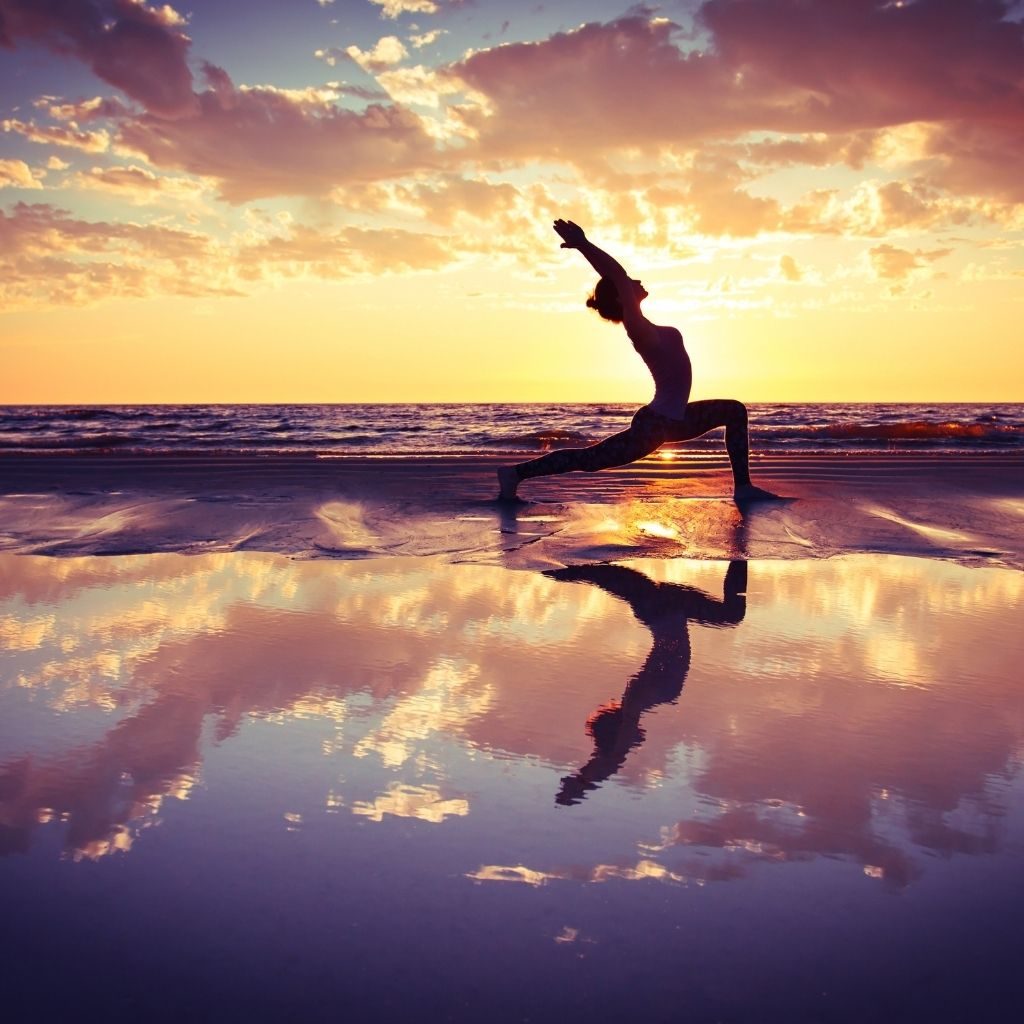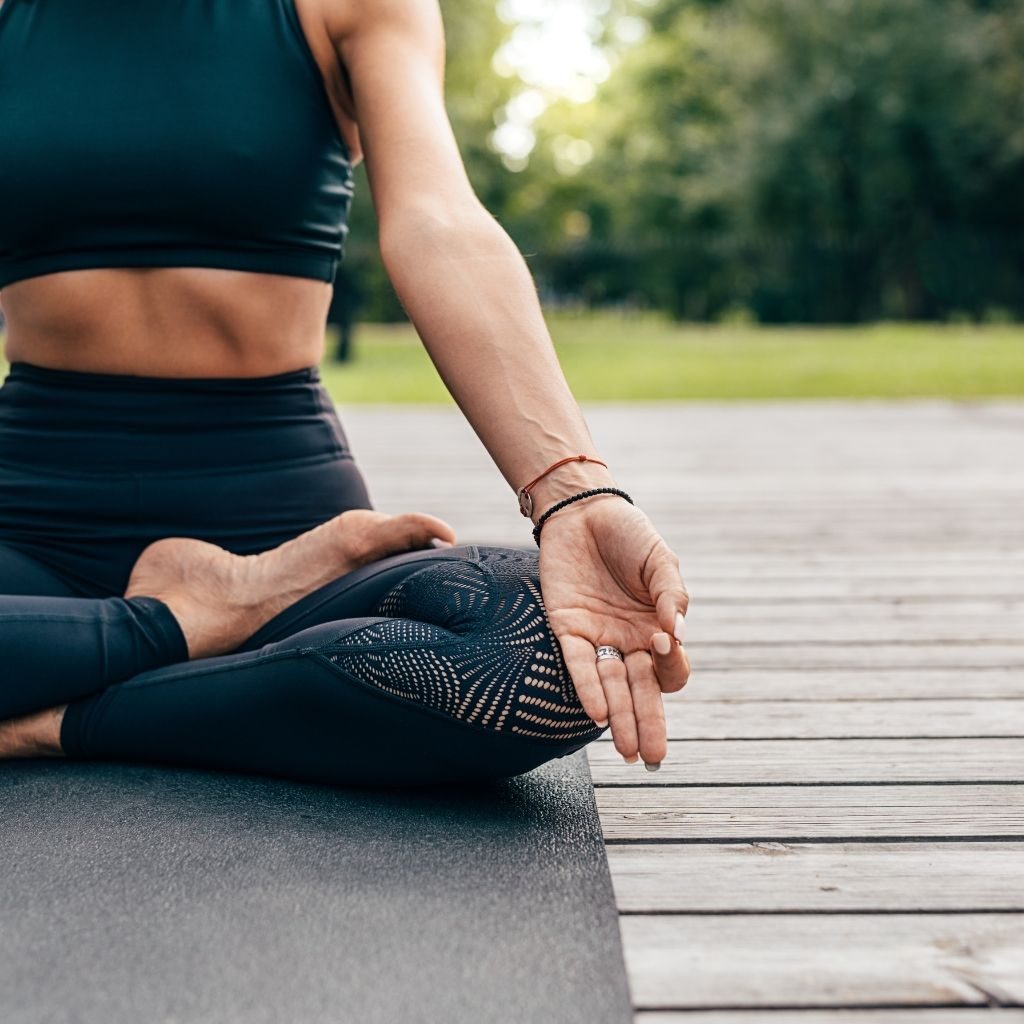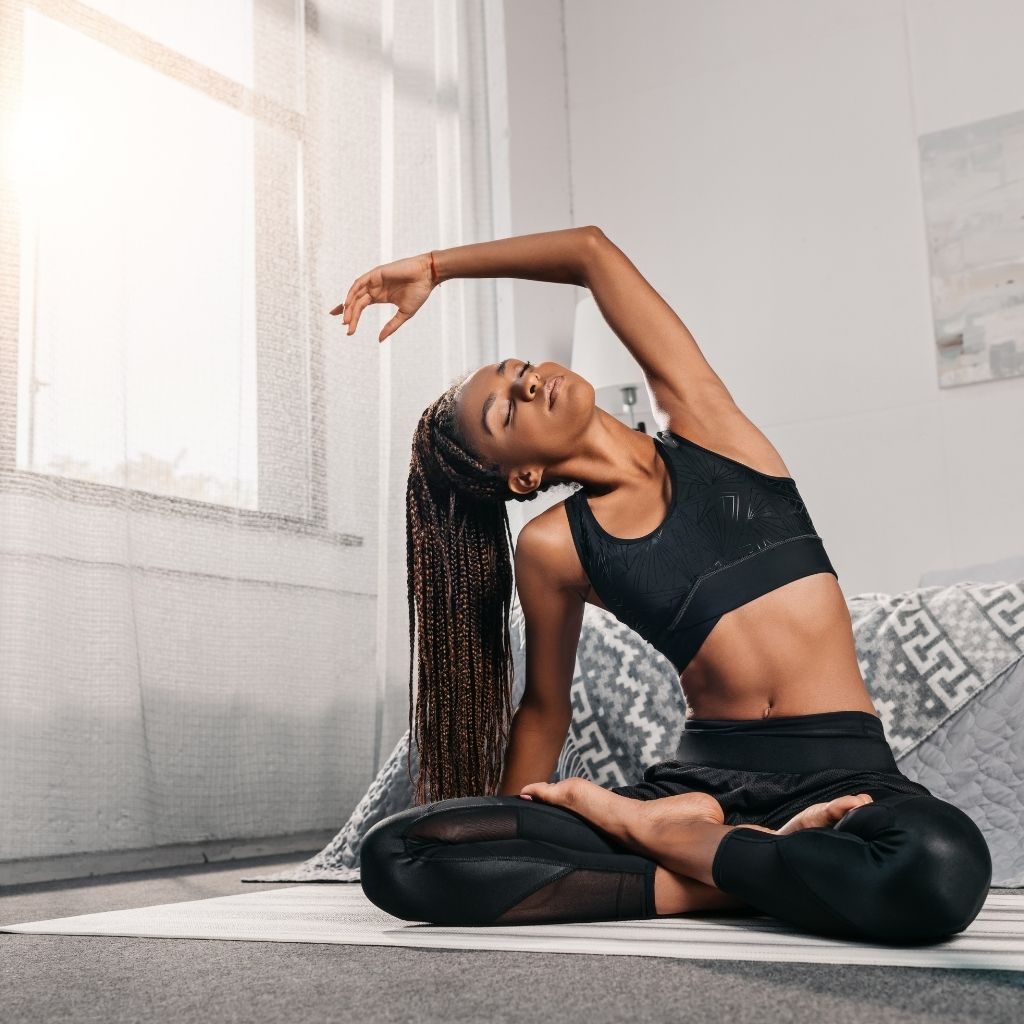9 Questions about the timing between yoga, meditation & everything else
Timing is everything.
For those of us who are somewhere in our journey with yoga and meditation, when to practice can fundamentally change what we derive from it and where we get with it.
In this article, we help you decide when is the best time for yoga and meditation and also help you adjust the relationship of your practice with food, workouts, and everything else.
Let’s dive right in…
Should you do yoga before or after meditation?
The eightfold path of yoga puts asana before meditation. This traditional approach to yoga has put asana before meditation as working on the physical body strengthens it, makes it more flexible, and therefore, prepares it to sit for longer durations to find stillness.
While there are no set rules for which should come first, there are distinct advantages of doing an asana practice before meditation.
In a typical yoga class, which involves physical postures (asanas) and breathwork, stress is released, the mind becomes less distracted, and through this, the body and mind are more relaxed when the time comes to sit for meditation.
It is only when the body is still, free from discomfort, and in a state of ease, that the mind begins to rest.

Is it better to meditate in the morning or at night?
It is generally better to meditate in the morning than at night. The reason behind mornings being better for meditation is that the mind is more fresh and relaxed, and free from constant thoughts of things to do, thus making it easier to stay focused and concentrated on one’s practice.
Known as Brahma Muhurta, one-and-a-half hours before sunrise, is considered to be the best time to meditate according to Hinduism.
One issue with meditating at night is that meditation is intended to bring awareness and is practiced with focus.
If one is tired from all that has happened in the day, it can be difficult to maintain the level of alertness because of drowsiness and fatigue.
However, if you have to decide between not meditating and meditating at night, choosing to meditate is surely the better option.
Also, if for whatever reason, meditating in the morning is difficult, the main benefit of a nighttime practice is that it can help you sleep better.
Let’s look at it in more detail…
Is it OK to meditate before bed?
A meditation practice before bedtime helps in falling asleep faster, sleeping longer, and improves the quality of your sleep.
That said, knowing how to meditate before bed is important, as we need a practice that is calming and relaxing.
The National Sleep Foundation tells us how to do it properly.
Meditating before bed helps to calm the mind, which is important when it comes to sleep.
A helpful meditation practice before bedtime is that of reflection, which entails replaying in the mind the events of the day with a witness-like attitude.
This helps in cultivating awareness of our thoughts, words, and actions from the day, building good habits, and bringing us closer to understanding the self.
Is it bad to meditate at night?
This depends on the intent of your meditation practice.
If your intent is to build and strengthen your power of focus, it could be a bad idea as the level of alertness tends to fall at night time. However, if your intent is to sleep better, meditating at night could be very helpful.
For a serious practitioner, meditating before sleep is not recommended.
Here is what Sadhguru, an Indian yogi and mystic, has to say about the question.
So, in a nutshell, what is the best time to meditate?
Let’s look at that…

What is the best time of day to practice meditation?
The best time to meditate is in the mornings as it sets the tone for the day and makes it easier to practice. Other times that may be suitable include mid-day to break from the noise that has built up during the day, or after work to smooth out the transition between your work life and your personal life.
In traditional Hindu philosophy, the hours before sunrise are considered to be magical for one’s spiritual practice, as this is the time when there is stillness even in the outside environment.
This makes early mornings more supportive for the pursuit of spirituality and self-development.
In India, yogis and spiritual seekers wake up a couple of hours before sunrise to do an asana practice, meditate, and pray.
Should you stretch before meditation?
It definitely helps to stretch before meditation. The body becomes open, more relaxed, and prepared to sit. Even a short and simple stretch, with some basic yoga asanas, hip openers, and back stretchers, can help with how the body feels when in a seated meditation posture.
Not stretching and simply getting into meditation can sometimes create drowsiness, an uncomfortable body, and light back pain.
Looking for postures that can help you prepare for meditation? This article can help.
That said, if you would like to meditate before stretching, you can use it to your advantage too.
It helps build more focus and mindfulness in exercising and to set an intention for what you would like to achieve.

Can we meditate after eating?
It is best to meditate on an empty stomach or to have at least a two-hour gap after having a meal before you meditate. Meditation after eating can cause drowsiness as some of the energy is being used to digest food which can defeat the purpose of your meditation practice.
Meditation practices like Vipassana, in their ten-day practice, require old students to abstain from eating after sunset.
The food that is provided to even first-time practitioners is very light and simple.
These rules are created so that it is easier for practitioners to develop their meditation practice and so that there is no interference from the body’s digestion mechanisms.
At the same time, meditating on an empty stomach can also be challenging. It can be difficult to focus the mind if there are constant cravings for food.
And what about breakfast and yoga?
Can we have breakfast before yoga or is it better to eat after our practice?
Let’s clarify this one out…
Is it best to do yoga before or after breakfast?
Going to a yoga class on a full or completely empty stomach is not recommended. What works best is to have something small before yoga so the stomach is not full and yet the body has energy. Fruits, smoothies, nuts, or oats are some quick and light foods that you can consume in the morning before yoga, keeping a 30-minute gap between eating and your practice.
Smart snacking is especially important if you are practicing a more vigorous style of yoga, like vinyasa or hot yoga.
Smoothies are a good option to have before (30 mins before) or after class (20 mins after)
Other great energetic goods to have before or after yoga are quinoa, avocado, or chia pudding.
Keep in mind to keep yourself hydrated, and drink plenty of water 30 minutes after your yoga class, to prevent cramps, soreness, and dehydration.
Wanna know more? 👉 Here Can I Drink Coffee After Yoga

Should you do yoga before or after a workout?
Yoga is best done after a workout, because a workout warms up the body, thus making it easier to stretch the body when practicing yoga postures afterward. If you practice yoga before your workout, the calm and serenity achieved through your practice will be lost in the action and the heat of your exercise session.
Even the government of India’s website lays down certain rules and regulations for yoga practice advising against practicing before a workout.
It specifically says to not “do strenuous exercises after yoga”.
It also says that yoga “should not be performed in a state of exhaustion”, which means, even if you are practicing yoga after a workout, make sure you are not completely depleted.
Should you do yoga before or after running?
If your yoga session lasts for more than 30 minutes, or if it is an intense session, it is better to do it after running. A vigorous yoga session can cause fatigue in the muscles, and if you try running with tired muscles, it can lead to injury. At the same time, doing light yoga for a shorter duration can help warm up the body and prepare the muscles for a run.
Practicing yoga after running can help you achieve the best out of your yoga practice.
The muscles are warmed which makes it easier to get into a deeper stretch in the various yoga asanas.
Also, lying down in savasana after a run and yoga session can help you find rest for the body after experiencing vigorous physical activity.

Should you do yoga before or after a shower?
Traditionally, it has been recommended to first take a shower and then practice yoga. By taking a shower before yoga, the body feels refreshed, which aids in feeling focused. Taking a shower after yoga is recommended only if it is done after 30 minutes of finishing the practice.
The traditional ashrams for yoga in India will always recommend showering before yoga and showering only after at least 30 minutes from the end of the yoga session.
You can find these rules in several places, including this place (Sadhguru) and this place (Samatvam Yoga).
When is the best time of day to do yoga?
The best time to practice yoga is early in the morning. This is because the body is well-rested, the mind is free from the stresses of the day that lies ahead, and yoga practice can help to warm up and energize the body that has just woken up from sleep.
If you are unable to practice yoga in the morning, early evenings are also good.
An evening practice ensures that the body is more warmed up and will usually be more flexible.
It also helps in switching off the mind from work and becoming fully present in the other aspects of your life.
If you find yourself practicing very late in the evening, a more restorative yoga routine can work better as it will aid in sleep.
Conclusion
Yoga and meditation, both have innumerable benefits for the body and the mind.
Cultivating a regular practice can be challenging for those of us who juggle with responsibilities, but the benefits that accrue make all of those worth it.
If following a fixed schedule is difficult, it is also important to hold compassion for the self.
In such a case, practicing whenever it is possible is a much better choice than not practicing at all.
This is an interesting video of Sadhguru, an Indian yogi, who talks about when is the right time to do yoga.

